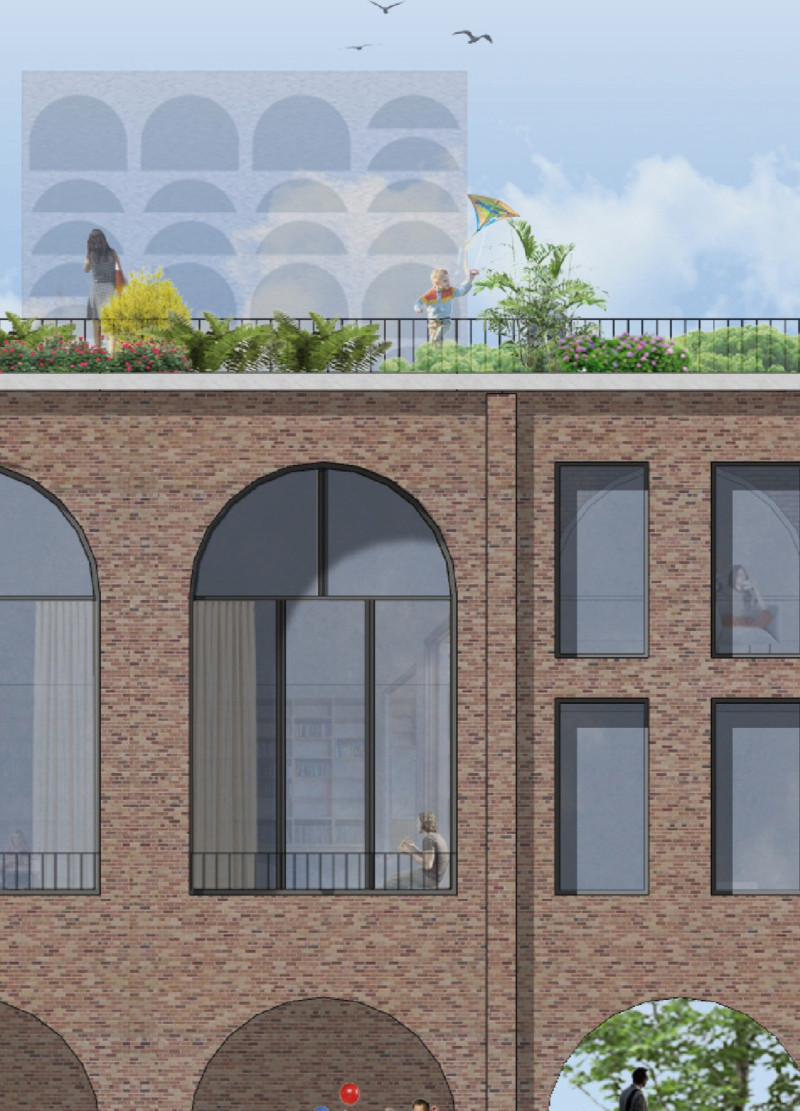5 key facts about this project
The Co-Massimo project is a co-housing initiative located in Rione Ripa, close to the historic Circus Maximus in Rome. This area serves as an important link between major roads, including Via Appia and Via Ostense. The design combines aspects of the site’s rich history with modern living needs, aiming to create a sense of community among diverse groups of residents.
Urban Scale Integration
The project consists of four levels: Rione, Borgata, Contrada, and Unit. Rione refers to the broader district, while Borgata is made up of 18 Contradas, which are smaller neighborhoods fostering community living. Each Contrada includes individual private units that enhance social interaction among residents. This structured approach helps to create connections and encourages participation in various shared activities.
Shared Spaces and Social Interaction
Multifunctional shared spaces are central to the project’s design. These areas include parks, gardens, and recreational facilities, all crafted to promote social engagement. The inner court is specifically designed as a multifunctional park that serves as a venue for community events and recreational activities. Elevated pathways throughout the space provide views of the archaeological site, allowing public access while respecting the privacy of residents.
Flexibility and Multigenerational Living
Co-Massimo supports multigenerational living by offering a variety of unit types within the Contradas. This arrangement allows for a mix of family structures and living preferences. Residents can choose units that best fit their needs and can relocate within the Borgata as those needs change. This flexibility encourages lasting connections and active participation in the community.
The project balances public spaces with private comfort. It acknowledges the historical significance of the Circus Maximus while addressing the practical needs of urban life. Through careful planning, the design integrates communal areas and private units, creating an environment that promotes interaction among residents while providing moments of solitude.



























